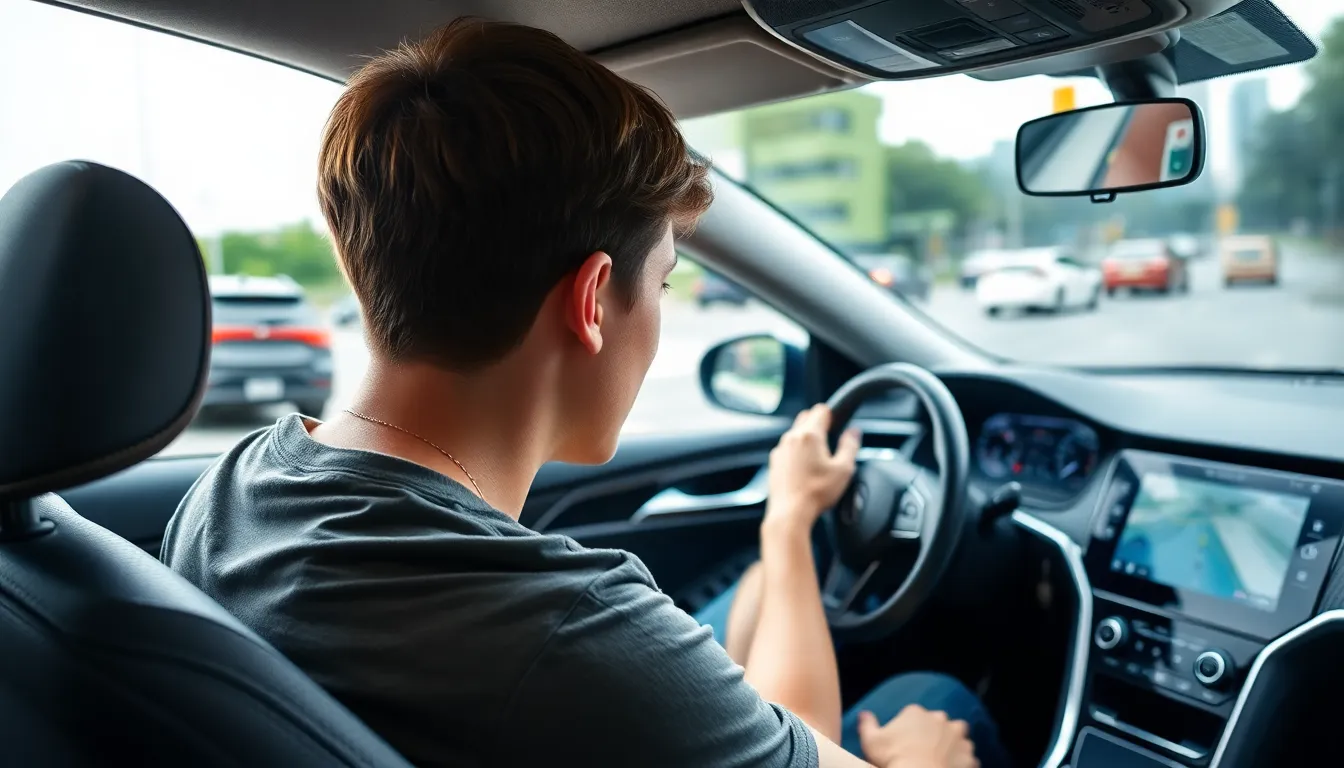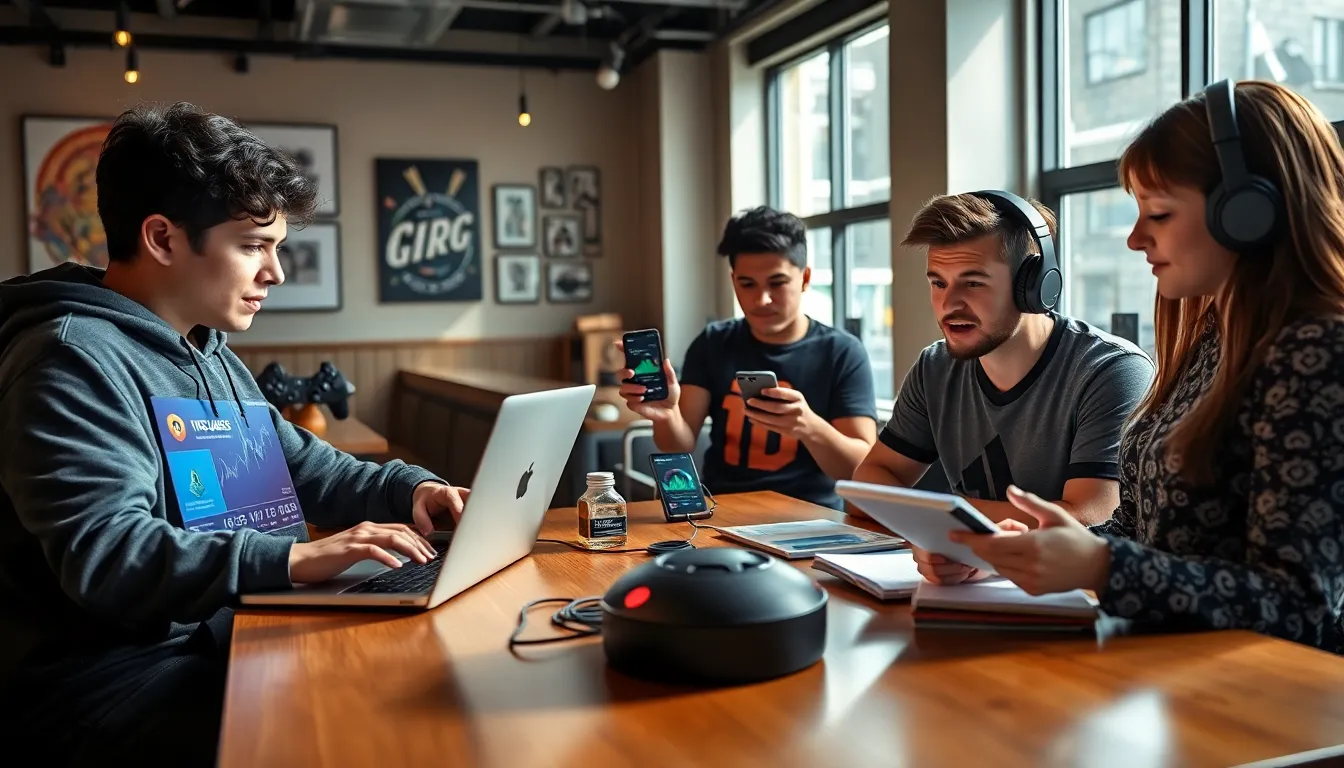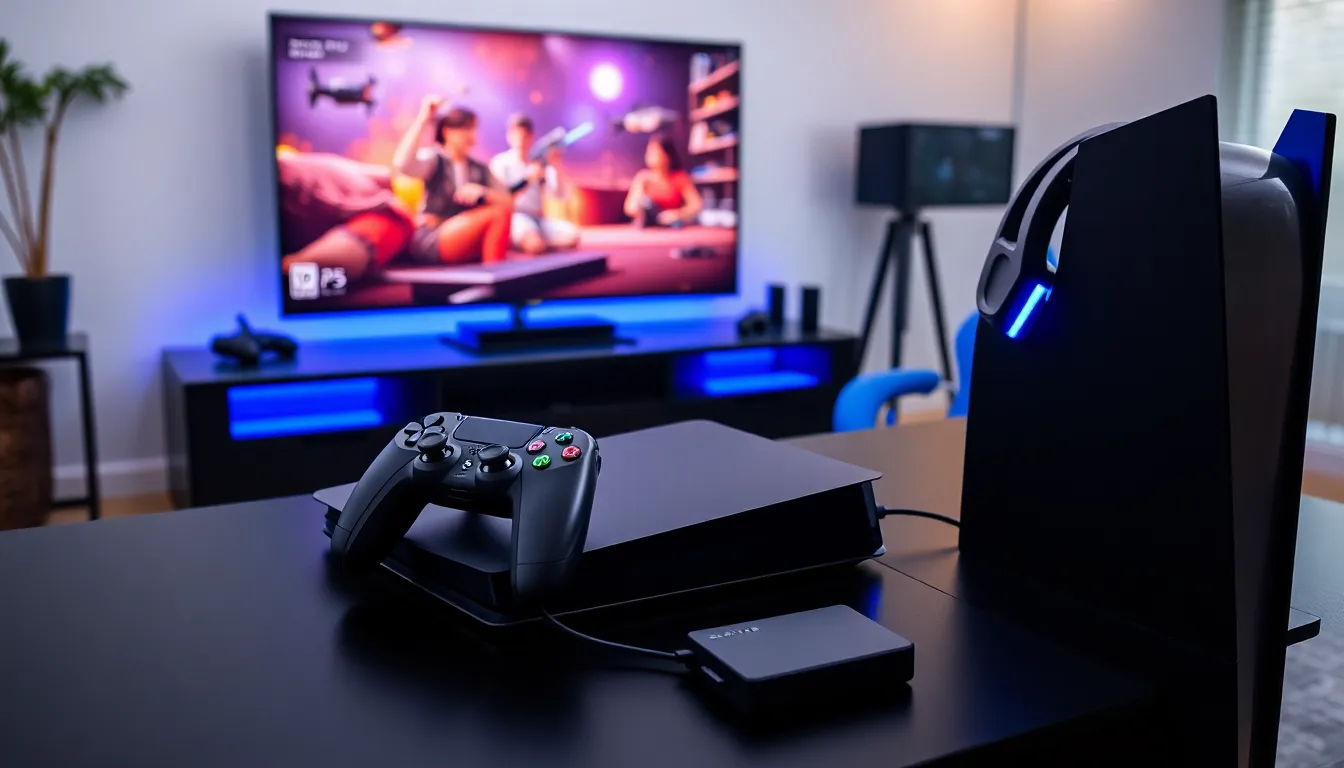Picture this: you’re cruising down the highway, wind in your hair, and your favorite playlist blasting. Suddenly, you realize you’re lost in the middle of nowhere. Panic sets in, but fear not! Connecting Google Maps to your car display via your iPhone can turn your vehicle into a navigational powerhouse.
With just a few simple steps, you can transform your dashboard into a high-tech command center. No more squinting at your phone while trying to decipher directions. Instead, enjoy clear maps and voice-guided navigation right where you need it. It’s like having a co-pilot who never gets lost! Let’s dive into this easy guide and get you on the road to hassle-free driving.
Table of Contents
ToggleUnderstanding Google Maps Integration
Google Maps integration provides a seamless navigation experience through in-car displays. Connecting the iPhone to the car allows drivers to view maps on a larger screen, enhancing visibility and reducing distractions. This feature enables voice-guided navigation, offering turn-by-turn directions without the need to reference the phone.
iPhones operating on iOS greater than version 12 support this integration, making it accessible for many users. Drivers can enjoy features such as real-time traffic updates and alternate route suggestions directly on their dashboard. This functionality ensures they remain focused on driving while receiving important navigational information.
Users need to activate Apple CarPlay to use Google Maps on their car display. CarPlay connects the iPhone to compatible vehicle systems, allowing access to various apps. Once connected, the Google Maps app can be launched, presenting an intuitive interface tailored for in-car navigation.
Drivers benefit from the ease of interaction; they can use touch controls or voice commands. Voice commands allow for hands-free operation, which enhances safety by reducing the need to physically manipulate the phone or display. Frequent users enjoy personalization features, such as saving favorite locations or frequently visited places.
For effective connection, ensure Bluetooth and Wi-Fi are enabled on both the car and the iPhone. Connecting the iPhone may require specific USB cables or ports, depending on the car’s model and the iPhone version. Checking compatibility enhances the setup process and minimizes potential frustration during navigation.
Drivers ready for an upgraded in-car navigation experience should consider these integration steps with Google Maps. Accessing a reliable navigation tool on the car display reflects advancements in driving convenience and safety.
Preparing Your iPhone

Preparing your iPhone for connecting to Google Maps on your car display involves a few essential steps. Following these steps ensures a smooth integration process.
Ensuring Compatibility
Check if both the car and iPhone support Apple CarPlay. Most vehicles from 2016 onward come equipped with this feature. Confirm that the iPhone runs on iOS 12 or later for optimal functionality. Review the owner’s manual of the vehicle for specific compatibility details. Take note of any required settings for a successful connection, such as enabling CarPlay through the vehicle’s interface.
Updating Your Apps
Updating Google Maps enhances performance and access to the latest features. Visit the App Store and check for updates to ensure the app is current. Additionally, keeping the iPhone’s operating system up to date strengthens overall connectivity. Select Settings, then General, and tap Software Update to verify the iOS version. Regular updates improve security and functionality, making navigation more effective and enjoyable.
Connecting Google Maps to Your Car Display
Connecting Google Maps to a car display enhances navigation convenience and safety. Use the following methods to integrate your iPhone with the car system effectively.
Using Apple CarPlay
Apple CarPlay provides seamless access to Google Maps. To start, connect the iPhone to a compatible vehicle using a Lightning cable or wirelessly. Check that the car’s infotainment system supports CarPlay. After connection, select the CarPlay option on the car display, then navigate to the Google Maps app. Turn-by-turn directions appear on the larger screen, ensuring clear visibility. Users can operate the app through touch controls or voice commands, maintaining safe driving practices.
Using Bluetooth
Bluetooth offers another way to connect the iPhone to the car display. Begin by ensuring Bluetooth is enabled on both devices. Access the car’s Bluetooth settings and select the iPhone from the list of available devices. Once pairing is complete, drivers can access Google Maps. Voice-guided navigation functions properly, allowing users to stay on course without distractions. Additionally, real-time traffic updates enhance route planning and efficiency.
Troubleshooting Connection Issues
Connection problems can occur when trying to link Google Maps to a car display via iPhone. Identifying common issues can help speed up resolution.
Common Problems and Solutions
Bluetooth connectivity issues often cause disruptions. Ensure Bluetooth is enabled on both devices. Compatibility problems may arise if the car model predates 2016. Checking the vehicle’s specifications can clarify this. Update iOS to the latest version, as it enhances compatibility and performance. Sometimes, Google Maps requires an update, so verifying the app version ensures smooth operation. Restarting the iPhone and the car’s infotainment system frequently resolves minor glitches. Users can also try re-pairing the iPhone with the car display if problems persist.
Seeking Further Assistance
If problems continue despite troubleshooting, further help is accessible. Contacting the car manufacturer’s support line can provide specific guidance based on the vehicle model. Online forums dedicated to Apple CarPlay often feature discussions about similar issues, offering community-driven solutions. Apple’s support page contains extensive resources related to iPhone connectivity problems. Visiting these resources can lead users toward effective resolutions to their connection difficulties.
Connecting Google Maps to a car display through an iPhone transforms the driving experience. By utilizing Apple CarPlay, drivers gain access to larger maps and voice-guided navigation, enhancing safety and convenience. This integration not only reduces distractions but also allows for real-time traffic updates and personalized route suggestions.
With the simple setup process and troubleshooting tips provided, users can enjoy a seamless navigation experience. Embracing this technology not only makes journeys more enjoyable but also reflects a commitment to safer driving practices. Adopting these steps can lead to a more efficient and enjoyable travel experience on the road.






